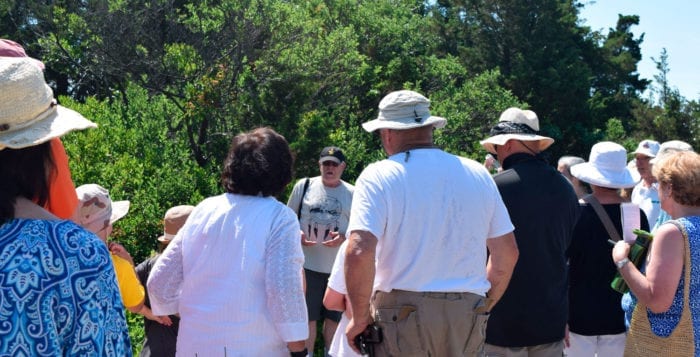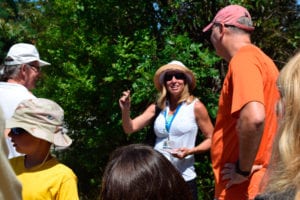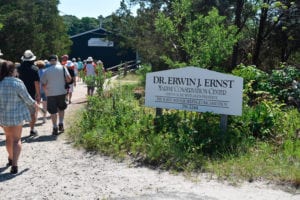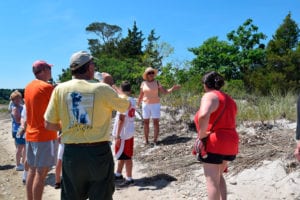ONE LAST SWIM
Bev Tyler came upon this tranquil scene during a walk along Shore Road in his beautiful hometown of East Setauket last Sunday evening
Send your Photo of the Week to [email protected]
ONE LAST SWIM
Bev Tyler came upon this tranquil scene during a walk along Shore Road in his beautiful hometown of East Setauket last Sunday evening
Send your Photo of the Week to [email protected]
HERE COMES SPRING!: Bev Tyler captured these stunning images of songbirds at a feeder in a Setauket backyard on March 30. Above, a male red-bellied woodpecker, left, a black-capped chickadee.
Bev Tyler captured these stunning images of songbirds at a feeder in a Setauket backyard on March 30. Above, a male red-bellied woodpecker, left, a black-capped chickadee.
Send your Photo of the Week to [email protected].
By Beverly C. Tyler
Growing up in Setauket, I learned a great deal from my father by his example, but encouragement and support came from Mom. My sister Ann, my brother Guy and I were taught that we were not only a family but a part of a community that extended from our relatives and neighbors across the street to our relatives and friends everywhere.
We lived with my Grandma Edith Tyler until I was 12 and then we moved into the house down the street where my father’s half sister Carrie had lived with her two aunts, Annie and Corinne, until their deaths. Soon after we moved, my Grandma Tyler moved in and lived with us until her death in 1963. A few years later my grandmother Margaret Carlton (Nana) moved from her home in Port Jefferson to our home and lived with us until her death in 1980.
During all this time, these transitions seemed very normal to me. Mom never said a cross word that I was ever aware of, nor any indication that it was the least bit difficult for her sharing a kitchen and dealing with a strong-willed mother-in-law and an equally strong-willed mother. I always loved and appreciated my grandmothers. They were, like Mom, independent women who had run households of their own.
Grandma and my grandfather Tyler owned and ran a boarding house (now Setauket Neighborhood House) until they sold it in 1918 to Eversley Childs. After my grandfather died in 1926, Grandma took the job of Setauket’s postmaster, and then as librarian at Emma Clark Memorial Library.
Grandma Carlton, Nana to us kids, had married Guy Carlton in 1909 in Alna, Maine, and the couple immediately moved to Port Jefferson where my grandfather Carlton, Pup-Pup to us kids, worked building the original Belle Terre Club. A master carpenter and cabinet maker, Pup-Pup built his house in Port Jefferson, overlooking the harbor, and my grandmother insisted that they have indoor plumbing. This was in 1909, when outhouses were the norm.
One summer (1948) I went to work with my grandfather in Crystal Brook. He was building a full bar in the basement of one of the houses. It was a beautiful piece of furniture with cabinets behind the bar in the game room of the summer cottages, and he told me, “Don’t tell your grandmother, she wouldn’t approve.” My grandfather was a tough man, but my grandmother was the strength of the family.
Mom took all of this in stride. She also believed in letting go and letting her kids explore and discover the world. When I was about 8, I was allowed to cross Main Street in Setauket on my own and take my 4-year-old sister and 3-year-old brother with me to Mrs. Celia Hawkins’ farm. We loved going across to the farm with cows, pigs, geese and a few chickens running through the house. We grew up on the buttermilk and candy corn Celia provided for us every day.
On a number of occasions, I unsuccessfully tried to milk the cows. I could never get the hang of it, but Celia let us churn the butter until our arms gave out and we collapsed on the porch. We also enjoyed mornings when we could help collect the eggs, learning quickly how to avoid having our hands pecked by the chickens.
Mom and Dad also took us on vacations to historic and natural sites from Williamsburg, Virginia, and Gettysburg, Pennsylvania, to Niagara Falls and the Reversing Falls Rapids in St. John, New Brunswick.
Dad drove and Mom made up games for us to play in the car, usually looking for things outside as we drove. I didn’t realize it at the time, but although Dad was the tour guide and historian, it was Mom who put the fun into the trips with details about interesting signs, structures and people along the route.
“One in; one out. Life goes on and we have a plethora of memories and stories to keep in our hearts.”
— Beverly Tyler
As adults, we took Mom on a few trips, including one to Maine for the burial service of my Aunt Etta, who died when she was 105. Going through one town, Mom suddenly burst out laughing. She pointed out a Chinese restaurant named Mi Sen Gui, and exclaimed, “That’s my son, guy.”
Mom sang a number of years with the Greg Smith singers, even traveling with them to Europe. She played bridge with a group of friends and enjoyed the Setauket Library book study group, even traveling with members of the club to London.
Mom and Dad were members of the Old Field Point Power Squadron and Mom completed every advanced grade course, including celestial navigation. I remember that after completing that last tough course, her warm, aromatic chocolate chip cookies reappeared after a few years absence. Mom was also an excellent cook whose pie crusts have no equal and my wife will attest to that.
Mom enjoyed golf, bowling, boating, car trips and other outdoor activities with my father until his death in a terrible auto accident in 1975. Mom married her second husband Lewis Davis in 1978 and together they enjoyed golf, bowling, trips to Florida and trips all over the world, making a few lasting friends in Australia and other countries as well as closer to home. I especially got to know and appreciate Mom as a friend as well as a mom after Lew died in 2008, in his 94th year.
By the time Lew died, Mom had developed paralysis due to an inherited condition that strikes different people in our family at all different ages and with varied intensities. By the last few years of her life, Mom struggled with special shoes and braces on both legs. I hardly ever heard her complain or let her paralysis slow her down. By this year she was almost completely wheelchair-bound but was still able, with assistance, to move short distances, including in and out of vehicles.
Mom has always been able to take a problem, evaluate it, and after a day, make a decision that is best for everyone around her as well as for herself. Mom always wanted her colonial era home and property to be preserved. Working through state legislator Steven Englebright, this has been accomplished and the property will now go to the Three Village Community Trust.
Mom never lost her sense of humor. Recently, her companion Elizabeth was rubbing some lotion, with a pleasing but distinctive aroma, on her feet. Mom turned and looked very seriously at Elizabeth and said, “Will this clash with my perfume?”
Mom was always able to set herself a goal and stick to it. Elizabeth said that Mom is the only person she knows who could eat one dark chocolate candy kiss and put the bag of candy back in the refrigerator.
Mom’s concern even extended to our parish priest. A week ago we all feared the end of her life was near, but we didn’t know she knew. I told her that our rector, Canon Visconti, was on the way to see her and she whispered to me, “Does he know the situation?” That’s Mom, always one step ahead of the rest of us.
Mom died Thursday, Aug. 25, in her 102nd year, just a few hours after her fourth great-great-grandchild was born in Tennessee. Mom is survived by sons Beverly (Barbara) and Guy, daughter Ann Taylor (Frank), two stepdaughters Sukie Crandall (Steve) and Nancy Rosenberg, seven grandchildren, one step-granddaughter, 21 great-grandchildren and four great-great-grandchildren.
One in; one out. Life goes on and we have a plethora of memories and stories to keep in our hearts.
The funeral will be Friday, Sept. 9 at 11 a.m. at the Caroline Church, 1 Dyke Rd., Setauket. There will be a wake at Bryant Funeral Home, 411 Old Town Rd. in Setauket Sept. 8 from 2 to 4 and 7 to 9 p.m.
Beverly Tyler is a lifelong resident of Setauket, Three Village Historical Society historian and author of books available from Three Village Historical Society.

To celebrate the history of the West Meadow Beach peninsula and its well-known cottage, Historians Barbara Russell and Bev Tyler led a walking tour along Trustees Road on Saturday, July 16. Park Ranger Molly Hastings shared information about indigenous plants and animals. A small group started out, but it grew as more and more people gathered to listen and learn.

First stop on the tour was the Old Field farm, which has been a horse show arena since 1930. That was the year Ward Melville offered it as a substitute venue to replace one that was no longer available in Smithtown. Brookhaven Town Historian Barbara Russell said that the farm became famous on the North Shore horse show circuit.
From the horse show grounds, Historian Bev Tyler pointed out the Fischetti excavation site on the far side of the creek. Named for the builder whose bulldozer uncovered Indian artifacts, it became the site of an archaeological dig in the 1980s that lasted two years. Tyler said the dig produced evidence of a manufacturing area used by Native Americans 13,000 years ago to create stone implements and tools. The manufacturing site sits 800 yards from the village that was discovered during a dig in 1955, led by New York State Archaeologist William Ritchie.
Russell provided an overview of West Meadow’s history. Despite the fact that access to the water and the peninsula was repeatedly reinforced in deeds, she said, it eventually fell into private hands. In 1908, the
Town of Brookhaven purchased the whole strip for use as a public beach. It was divided into 110 lots, and

eventually cottages were erected on the lots, which were leased as summer bungalows. In the middle was a group of lots that formed a beach association for use by Brookhaven Town residents. The cottages — except for five — were removed in 2005, after 75 years of negotiations, Russell said.
Another stop on the tour was the Dr. Erwin J. Ernst Marine Conservation Center. The structure that eventually housed the center, said Russell, was one of the “temporary” buildings at Setauket School, added to
accommodate high school students as the school population grew.
It was moved to the beach to house the program which had been taught out in the open by Ernst. Behind the center is the outlet of an aquifer that has been there for eons. The spring water is cool, even on a hot summer day.
Aunt Amy’s creek is the name of a natural curve in the lagoon’s water flow. Its shore was the site of a 1955 archaeological dig, financed by Ward Melville and conducted by Ritchie.

The dig unearthed the tools, weapons and kitchen implements of a village. All materials collected in that process may be found in the New York State Museum in Albany. When the Fischetti dig was undertaken, Melville’s wife agreed to finance it — but only if all the material found remained in the Three Village area.
The tour ended at the Gamecock Cottage, which Russell said was built as a hunting and fishing cabin by a man named William Shipman somewhere between 1873 and 1876. An avid sailor, he came from Brooklyn. The cottage has recently been raised up, and is being restored and structurally reinforced. Visitors were allowed to enter and view artifacts produced by the Fischetti dig, as well as historical photos and maps of the area.
